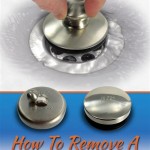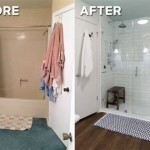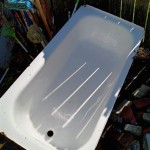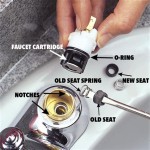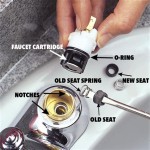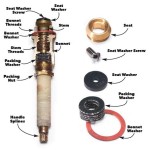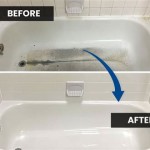How Much to Convert a Bathtub to a Walk-In Shower: A Comprehensive Guide
Converting a bathtub into a walk-in shower is a popular home renovation project, often driven by accessibility needs, aesthetic preferences, or a desire to optimize bathroom space. Understanding the costs involved is crucial for budgeting and planning the project effectively. This article provides a detailed breakdown of the various factors influencing the price of a bathtub-to-walk-in shower conversion, enabling homeowners to make informed decisions.
The cost of converting a bathtub into a walk-in shower can vary considerably, depending on a range of elements, including the size and complexity of the project, the materials selected, labor costs, and any necessary plumbing or electrical modifications. Generally, the price can range from $3,000 to $15,000 or even higher, depending on the specific requirements of the conversion.
Factors Influencing the Cost of Conversion
Several key factors contribute to the overall expense of converting a bathtub to a walk-in shower. These factors should be carefully considered when developing a budget for the project.
Size and Configuration: The dimensions of the existing bathtub and the desired size of the new walk-in shower significantly impact the cost. A larger shower enclosure generally requires more materials, increasing the overall expense. Additionally, the configuration of the shower, such as whether it's a corner unit, a neo-angle design, or a custom-built enclosure, will play a role in determining the complexity of the installation and associated costs.
Materials: The choice of materials for the shower enclosure, walls, flooring, and fixtures significantly impacts the overall budget. Options range from basic acrylic or fiberglass shower bases to more expensive tile or stone. Similarly, shower doors can range from simple shower curtains to framed glass doors to frameless glass enclosures, each with a different price point. High-end materials, such as imported tiles, custom glass, and premium fixtures, will naturally increase the overall cost of the project.
Plumbing and Electrical Work: Converting a bathtub to a walk-in shower often necessitates adjustments to the existing plumbing and electrical systems. This might involve relocating drain lines, adjusting water supply pipes, or adding new electrical outlets for lighting or ventilation. Complex plumbing or electrical modifications can substantially increase the labor costs and the overall project expense.
Labor Costs: Labor costs represent a significant portion of the overall project budget. These costs are determined by the hourly rates of the contractors involved, including plumbers, electricians, tile installers, and general contractors. The complexity of the project, the time required for completion, and the experience and expertise of the contractors all influence the final labor costs. Obtaining multiple quotes from different contractors is essential to ensure competitive pricing and a clear understanding of the scope of work.
Accessibility Features: If the primary motivation for the conversion is accessibility, the addition of features such as grab bars, a shower seat, or a low-threshold entry can add to the cost. These features enhance safety and usability for individuals with mobility challenges, but they require specialized installation and materials.
Demolition and Removal: The cost of demolishing and removing the existing bathtub and surrounding materials should also be factored into the budget. This includes the expense of disposing of the debris properly, which may involve rental fees for dumpsters or disposal services.
Permits and Inspections: Depending on local regulations, permits may be required for plumbing and electrical work involved in the conversion. These permits incur fees, and inspections are necessary to ensure compliance with building codes and safety standards. Failure to obtain necessary permits can result in fines and delays.
Ventilation: Proper ventilation is essential in any bathroom to prevent moisture buildup and mold growth. If the existing bathroom lacks adequate ventilation, it may be necessary to install or upgrade the exhaust fan, which will add to the overall cost.
Cost Breakdown: Material and Labor Estimates
To provide a more concrete understanding of the cost breakdown, consider the following estimated ranges for various components of the bathtub-to-walk-in shower conversion project:
Shower Base: The shower base is the foundation of the walk-in shower and can be made of various materials, including acrylic, fiberglass, or tile. Acrylic and fiberglass bases are generally more affordable, ranging from $300 to $800. Tile bases, on the other hand, can cost considerably more, ranging from $500 to $2,000, depending on the type of tile and complexity of installation.
Shower Walls: Shower walls can be constructed from tile, acrylic panels, or other waterproof materials. Acrylic panels are a cost-effective option, typically ranging from $400 to $1,000. Tile walls offer a wider range of aesthetic options but are more expensive, ranging from $800 to $3,000 or more, depending on the tile material and installation complexity.
Shower Door or Enclosure: The choice of shower door or enclosure greatly influences the overall cost. Shower curtains are the most affordable option, costing as little as $20 to $50. Framed shower doors typically range from $300 to $800, while frameless glass enclosures can cost $800 to $3,000 or more, depending on the glass thickness, hardware, and installation.
Plumbing and Fixtures: Plumbing costs can vary widely depending on the extent of modifications required. Basic plumbing work, such as relocating drain lines, might cost $200 to $500. More extensive plumbing modifications, such as rerouting water supply pipes, could cost $500 to $1,500 or more. Shower fixtures, including showerheads, faucets, and valves, can range from $100 to $1,000 or more, depending on the quality and features.
Labor Costs: Labor costs typically account for 40% to 60% of the total project cost. The hourly rate for plumbers, electricians, and tile installers can vary depending on location and experience. General contractors typically charge a project management fee in addition to the hourly rates of the subcontractors they oversee. Labor costs can range from $2,000 to $8,000 or more, depending on the complexity of the project and the number of trades involved.
Accessibility Features: Grab bars typically cost $50 to $200 each, plus installation. Shower seats can range from $100 to $500 or more, depending on the type and complexity of installation. Low-threshold shower bases can cost $500 to $2,000 or more, depending on the size and material.
Demolition and Removal: Demolition and removal costs can range from $100 to $500, depending on the size of the bathtub and the amount of debris to be removed. Dumpster rental fees may also apply.
Strategies for Reducing Conversion Costs
While converting a bathtub to a walk-in shower can be a significant investment, several strategies can help homeowners reduce costs without compromising quality or functionality.
Obtain Multiple Quotes: Getting quotes from at least three different contractors allows homeowners to compare pricing and scope of work. This helps ensure competitive pricing and provides a better understanding of the project's overall cost.
Choose Affordable Materials: Selecting more cost-effective materials, such as acrylic or fiberglass shower bases and panels, can significantly reduce the overall project cost. While high-end materials may be aesthetically appealing, they often come with a substantial price premium.
DIY Some Tasks (If Possible and Safe): Depending on the homeowner's skill level and experience, certain tasks, such as demolition or painting, can be completed independently to reduce labor costs. However, it's essential to ensure that all work is performed safely and in compliance with local building codes.
Keep the Plumbing Layout Simple: Minimizing plumbing modifications can significantly reduce labor costs. If possible, try to maintain the existing drain and water supply locations to avoid extensive rerouting.
Plan Carefully and Avoid Changes: Making changes to the project scope after work has begun can result in increased costs and delays. Careful planning and detailed specifications help minimize the need for modifications and ensure that the project stays within budget.
Consider Financing Options: If the cost of the conversion is prohibitive, consider exploring financing options, such as home equity loans or lines of credit. These options allow homeowners to spread the cost over time and make the project more affordable.
Prioritize Essential Features: Focus on incorporating essential accessibility features if that the primary purpose of the renovation such as grab bars and a shower seat. Other features, such as elaborate tile work or high-end fixtures, can be added later if budget allows.
Shop Around for Fixtures: Comparing prices from different suppliers can help find the best deals on showerheads, faucets, and other fixtures. Online retailers often offer competitive pricing compared to traditional brick-and-mortar stores.
Long-Term Value and Considerations
While the initial cost of converting a bathtub to a walk-in shower may seem substantial, it's important to consider the long-term value and benefits of the project. A walk-in shower can significantly enhance the functionality and aesthetics of the bathroom, making it more comfortable and convenient to use.
For homeowners with mobility challenges, a walk-in shower can significantly improve safety and independence, allowing them to maintain their bathing routines without assistance. The addition of accessibility features, such as grab bars and a shower seat, can further enhance safety and usability.
A well-designed and professionally installed walk-in shower can also increase the value of the home. Many homebuyers appreciate the convenience and accessibility of walk-in showers, making them a desirable feature in a bathroom renovation.
Furthermore, converting a bathtub to a walk-in shower can help conserve water. Showerheads typically use less water than bathtubs, which can lead to lower water bills over time. This also benefits the environment by reducing water consumption.
Finally, be sure to factor in the lifespan of the conversion itself. Using quality materials and ensuring proper installation will contribute to the longevity of the renovation, maximizing the return on investment.

How Much Does A Tub To Shower Conversion Cost

Mom Knows Best The Cost Of Converting A Bathtub To Walk In Shower

How Much Does A Tub To Shower Conversion Cost 2025 Angi

Master Bathroom Renovation Converting A Bathtub Into Walk In Shower Our Handcrafted Life

2025 Tub To Shower Conversion Cost Walk In Stall

Master Bathroom Renovation Converting A Bathtub Into Walk In Shower Our Handcrafted Life

Transform Your Bathtub Into A Walk In Shower Budget Friendly Diy Project

Pros And Cons Of Walk In Showers Naperville Il

Sweeten Bathtub To Shower Conversions That Add Style Space

Sweeten Bathtub To Shower Conversions That Add Style Space
Related Posts

